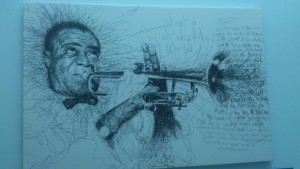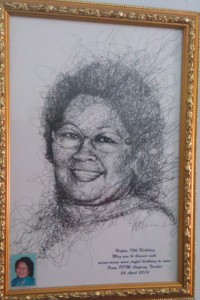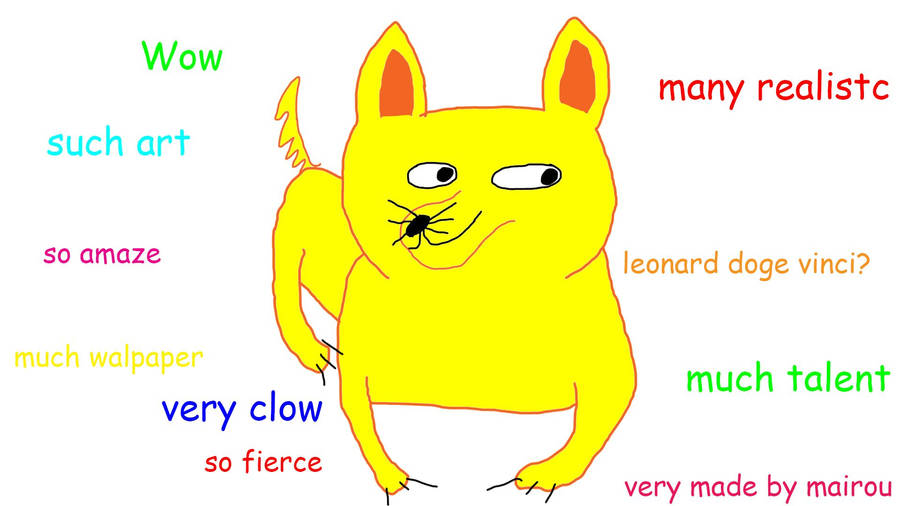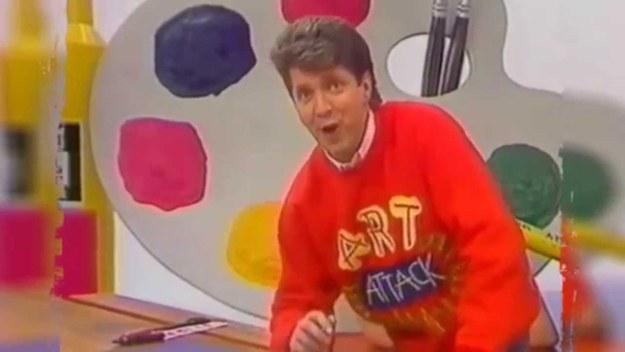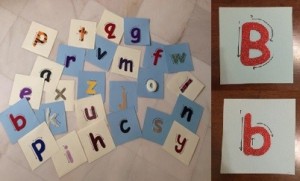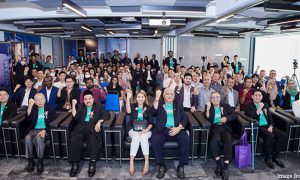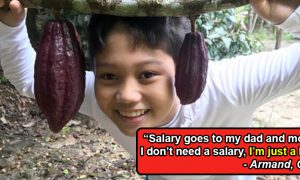5% of Malaysian kids can’t actually read properly. Here’s what we learnt from them (!)

- 537Shares
- Facebook481
- Twitter2
- LinkedIn4
- Email11
- WhatsApp39
Ohmygerd right? Statistics don’t lie tho. Who would’ve guessed this condition has such prevailing numbers among ongoing school children in Malaysia. Because in 2002, 1 in 20 children from a pool of more than 300,000 participants surveyed had this condition.
If you’ve guessed what it is, imagine receiving a virtual cookie right now. If not, the answer is dyslexia (it’s a reading disability). Some of the symptoms may include trouble spelling, reading, writing, and even ‘sounding’ words mentally, and these may vary between different people. In other words, people growing up with dyslexia experience a mental struggle from identifying acrobatically-talented letters to letters doing disappearing acts.

Here’s a glimpse of what people with dyslexia see. Go ahead, try reading all of it. For the full experience of this, click on the image. GIF from giphy.com
I had the opportunity to visit the Persatuan Dyslexia Malaysia (PDM) in Ampang a couple of years ago for an undergrad project. Our goal was to create simple and easy educational tools to help them.
A little info about the place yea. A friend of mine working at the PDM branch in Bangi says the kids have to go through assessments to get enrolled. After assessing their linguistic ability in English and B.M., they take a math test for signs of dyscalculia (dyslexia but for numbers). During their time there, they have to get an approval by the Kementerian Pendidikan Malaysia (KPM) to be exempted from school to attend this program. Most graduate in 3 months, while those still struggling would usually remain another 3 months.
Not only did I learn more about these super-enthusiastic children as our project progressed, but they taught me a few things themselves too. We hit a few roadblocks on the way, but we strategically overcame it with theories, appropriate colours, and… slight tickling (we’ll explain later)? Here are the few things I learned when helping out kids with dyslexia.
1. Dyslexics make great artists
One of the first things that grabbed my attention when I visited the center were pictures like these mounted on their walls.
Soon I discovered that these pictures were sketched by a local dyslexic named Vince Low. He sketches super cool pictures for a living. If you wanna see more of his work, check out his site. According to his bio, the nature of his learning disability led his parents into giving him an opportunity to learn about art and music. This turning point definitely helped him realize his talent, as he could sketch beautifully-crafted art oh so effortlessly.
Clearly having dyslexia didn’t hold him back. Seeing how he was able to thrive with his reading disability is very inspirational. I really can’t imagine a world where I couldn’t even read Harry Potter. (How else would I have found out about how Dobby was so much more awesome in the book. *holds sock, rolls on floor, cries*)
Another Malaysian celeb who is dyslexic is local rapper Altimet.
“The simple truth is that I’m dyslexic,”
“For most other rappers, the job gets done faster if they can read the lyrics. But having to read slows me down.” – Altimet, as quoted by R. AGE
Altimet also grew up with dyslexia, but didn’t realize it at the time. He mentioned how it pushes him to be a more creative person despite it slowing him down when writing his lyrics. This may be so because some dyslexics have great listening comprehension due of their reading disability (they may understand the facts of basic spoken language better). That may explain a lot about how this celeb turned his super hearing into his music career.
2. Most of these kids, are easily misunderstood for being lazy/stupid
During our interview with the coordinator at PDM Ampang, she mentioned how easy it is to misjudge the children’s attitude when they have a learning disability like this. They could be labelled as a bad/naughty child due to their inability to read or pay attention.
More so when I found out that most of them have other disorders at the same time, like Attention Deficient Hyperactive Disorder (ADHD) and autism spectrum disorder (ASD). There may be a wide range of undiscovered factors as to why it is so, but it most probably surrounds genetics and an individual’s neurodevelopment.
“Dyslexic/ADHD kids are creative, “outside-the-box” thinkers. They have to be, because they don’t see or solve problems the same way other kids do. In school, unfortunately, they are sometimes written off as lazy, unmotivated, rude, or even stupid. They aren’t.” – Rick Riordan, author of Percy Jackson series
I grew up with an ADHD cousin whom, as child, did the most dangerous stuff known to humanity, and then getting ‘hantam-ed’ for it. We only found out later that he has ADHD, which explained everything. Now, he’s grown into an emotionally-sensitive and sweet 19 year old who cries watching anime, but it’s still difficult to make him pay attention and ask him go mandi when he is distracted by his phone.
On top of that, not all children may be able to express how they feel at that age. Like Vince Low, he also experienced getting the ‘malas’ label and went into a minor rebellious phase during secondary school because of it. Also, most don’t realize they have a reading disability until they reach adulthood! It’s like skipping the tutorial of a game and going ahead with fighting one of the bosses.
3. Catching their attention is difficult, but they learn better using their senses
For a person who would sometimes want a genie to wish kids away at the sight of someone’s spoiled, crying child in McD (faster buy that happy meal and run pls), the children I met in the center were super energetic but also great to work with. But for every successful interactive moment, there was an equally distracted student.
We would think kids love bright, rainbow-ish colours, but as true as that may be, it might be a little bit too distracting for dyslexics. Since we had to capture their attention, we mashed our brains and discovered that they read better when the letters and background had a lower contrast difference; because studies show dyslexics read more efficiently like that.
Contrast works differently for dyslexics due to differences in their magnocellular visual pathway (the processing of visual information of shape, colour, sizes etc). So, lesson here is that they may like colourful things, it gets their attention, but a little too much contrast could confuse them.
Although we tried to scientifically capture their attention, reality is, they’re still kids. We fear the teaching tools alone weren’t enough to capture their attention. Hence, we involved teaching them through their senses more.
Because of the need for sensorial learning (they learn better when more than one of their senses are activated, especially the use of touch and kinetic movement), and also because some of the kids have problems with fine motor skills (like holding a pencil), we tried to incorporate all that into our tools.
With the information we gathered, we went back to brainstorm for tools to help them learn better. And like like an episode of Phineas and Ferb, we knew what we’re gonna to do today for the next few weeks. We put our brains together, sketched prototypes, then came up with two final products which we’ll talk about in the next point.
4. There are DIY learning tools you can make with household items to help dyslexics
We found out that the center already had an alphabet tray (fitting a piece of letter into their shape outline) and a magnetic book (for spelling words). These tools contain a minimal distinguishable sense of touch, and these were common teaching materials, but with an absence of sensory learning; plus they weren’t really catered for dyslexics.
We tried to improve on that and design something with the intent to activate multiple sensorial stimulus and maximize their learning process. And instead of one tool, we came up with two: a salt tray and tactile flash cards.
1. Salt tray
The salt tray’s skeletal base is just a cardboard box’s cover. Decorate the box, paint the underside of the cover, pour a decent amount of salt and it’s good to go. Senang right? With this, they can practice tracing on the salt and improve their fine motor skills before they move on to pencils.
2. Tactile flash cards
We made this from good old manila card. Here are the simple steps to create these cards:
- Hunt for materials like old T-shirts, old rugs/towels, sandpaper etc.
- Cut them in the shape of letters.
- Glue them on a square cream-coloured (because of the contrast) manila card.
- Draw pointer/arrow lines and numbers to indicate the correct strokes.
*pro tip: Cut the letters in Comic Sans because studies show that people with dyslexia find it more readable, why it is so is…unconfirmed. But it seems appropriate for us Malaysians too since we write our letters that way.*
This helps dyslexics identify the letters by tracing their fingers along different materials shaped into letters, and learn how to spell by rearranging the letters into words. We also tried tracing letters on the palm or the backs of the kids as a test after they practiced on the flash cards, which made them ticklish. They laughed a lot, but at least they could learn and paid more attention.
And because the coordinator liked our teaching tools, we ended up improving the flashcards, created more (letters and numbers too) and donated them all to the center. Hopefully, these tools could help further improve the way these children learn and remember their ABCs. Who knows? They might end up being the next Picasso.
Don’t judge a book you can’t read by its creatively-personalized cover
Dyslexia isn’t profiled under a mental disorder, it’s just a learning disability. So don’t freak out one day just because someone says they see letters doing the tango. Some succeed in overcoming them, others may take a little while more. It’s a condition present since birth. There is no cure or permanent solution for it, all we can do is guide them and give them a little extra attention. It could make a huge difference for them.
“Don’t ask what’s wrong with the reader, ask what’s wrong with the book.”
“We routinely think of accessibility for buildings, broadcasts and public service publications – so why not books?” – Mairi Kidd, an independent publisher for dyslexics and struggling readers, as quoted by The Guardian
- 537Shares
- Facebook481
- Twitter2
- LinkedIn4
- Email11
- WhatsApp39



